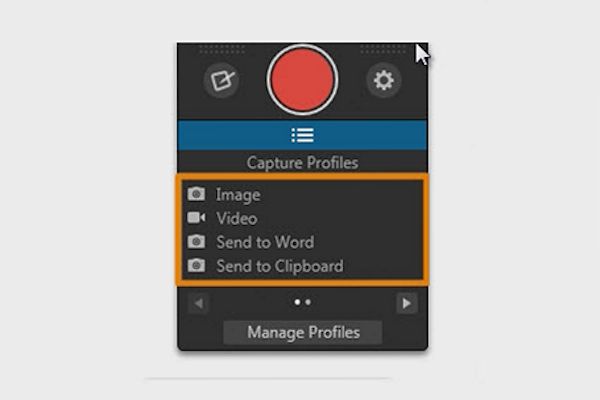
 Record and narrate a set of images with the Create Video from Images option. Record a presentation with Picture-in-Picture video of the speaker. Record a demonstration or a how-to video. You can choose to record microphone audio, system audio, and a webcam. Such as the library area, where it holds all your captures, it picks up information such as application the capture is of, Website Address and more.When a screenshot isn’t enough, record a video of the screen as an MP4 file. SnagIT has many hidden powerful features, that I’m still learning today, On each section you get a number of styles to choose from as well, making it quick and easy to edit your shots.įinally, I just use the “Copy All” function to add to my clipboard for pasting into documents, meaning the original image can be preserved in its state.
Record and narrate a set of images with the Create Video from Images option. Record a presentation with Picture-in-Picture video of the speaker. Record a demonstration or a how-to video. You can choose to record microphone audio, system audio, and a webcam. Such as the library area, where it holds all your captures, it picks up information such as application the capture is of, Website Address and more.When a screenshot isn’t enough, record a video of the screen as an MP4 file. SnagIT has many hidden powerful features, that I’m still learning today, On each section you get a number of styles to choose from as well, making it quick and easy to edit your shots.įinally, I just use the “Copy All” function to add to my clipboard for pasting into documents, meaning the original image can be preserved in its state.  Shape tool (to remove identifying info). Obvious in its name really, SnagIT editor is the second part of the program, where you make your screenshots come to life. So when I’m doing documentation, I can just capture and paste into Word.Īnd the final best bit of it is the floating button at the top of the screen, so I have the choice of a hotkey function to active the program, or click this button at the top. So my favourite profile that I’ve created is to capture an area, copy it to clipboard, include the pointer.
Shape tool (to remove identifying info). Obvious in its name really, SnagIT editor is the second part of the program, where you make your screenshots come to life. So when I’m doing documentation, I can just capture and paste into Word.Īnd the final best bit of it is the floating button at the top of the screen, so I have the choice of a hotkey function to active the program, or click this button at the top. So my favourite profile that I’ve created is to capture an area, copy it to clipboard, include the pointer. 
Here this the scrolling options you can see, just two big buttons to press and the program does the rest.Īlso notice the magnified view in the corner, this means when you capture application dialog windows, you can go right up to the edge you need making it super sharp! Here you can choose the area in which you capture, so this can be the all-in-one classic, which is you just drag to the size of your screen, or if it’s a website, you can use the scrolling options. So here’s the capture side, which is based around the use of profiles. We can do static images and video, with an in-depth editing of the static side, but little options for video. So SnagIT is broke down into two parts, the capture side, and the editing of the captures. To show off some of the features, I am going to try to use SnagIT to capture itself. The end result is either the shots are used for my client project documentation, or here on in the blog posts. I use it for capturing shots of the environment, as it is now, and after I’ve changed it, and then annotating them with arrows and text. It’s not free, but it has such a great interface, I can’t face using anything else. Recently updated on March 14th, 2015 at 10:47 pmĮveryone has their favourites, and mine is SnagIT.







 0 kommentar(er)
0 kommentar(er)
